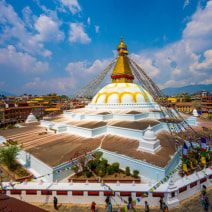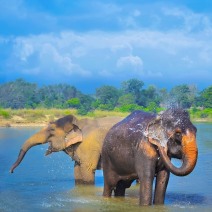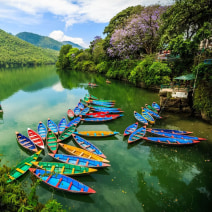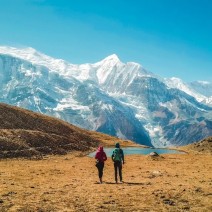Nepal Travel Guide
Nepal is a land of soaring mountains, ancient traditions, and vibrant culture. With a population of around 30 million, it is home to eight of the world’s ten highest peaks, including the legendary Mount Everest in the Himalayas. Often called the “roof of the world,” Nepal is the highest country on Earth. Its capital, Kathmandu, is a bustling hub of life, culture, and sacred temples, while the tranquil lakeside city of Pokhara offers serene natural beauty. The official language is Nepali, though many regional languages and dialects are also spoken throughout the country. Every corner of Nepal reveals breathtaking landscapes, rich heritage, and deep spiritual traditions.
Trek through the foothills of the Himalayas for awe-inspiring mountain views, discover serene monasteries nestled in the hills, or enjoy a yoga session surrounded by peaceful natural scenery. Visit traditional villages to meet the welcoming locals, explore colourful markets, and experience the country’s rich blend of Hindu and Buddhist heritage. Renowned for its warm hospitality and friendly spirit, Nepal offers a perfect mix of dramatic landscapes, cultural treasures, and genuine warmth that promises an unforgettable journey of discovery and adventure.
We’ve outlined some helpful information below to support you as you plan your holiday to Nepal.

Time Zone & Currency
The currency of Nepal is the Nepali Rupee and is six hours ahead of Greenwich Mean Time (GMT).

Weather in Nepal
Nepal’s climate varies by region, but generally features mild, dry winters and warm, wet summers during the monsoon season.

Reading For Your Trip To Nepal
The Snow Leopard by Peter Matthiessen
Kathmandu by Thomas Bell
The Snow Leopard by Peter Matthiessen
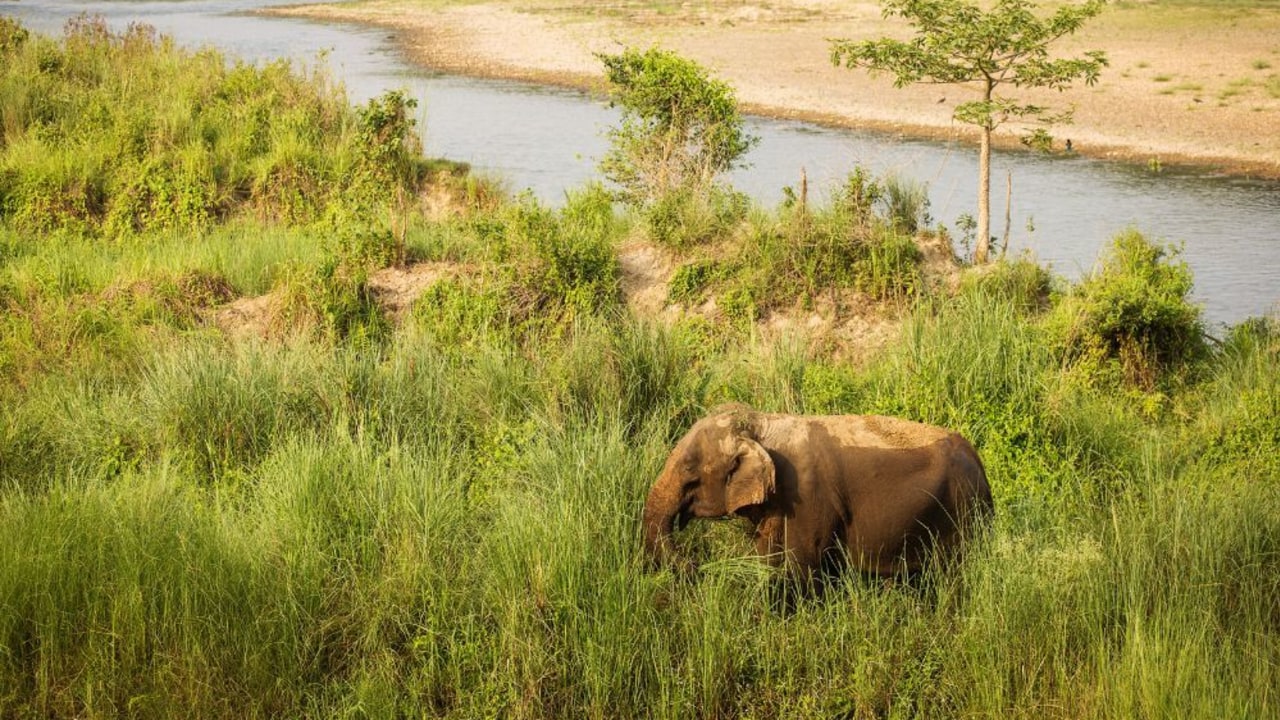
Best time to go to Nepal
Our trips to Nepal take place in April and November, when the weather is mild, clear, and perfect for exploring. Travelling in spring and autumn offers excellent conditions for sightseeing, trekking, and enjoying the country’s stunning mountain scenery.
Top activities and sights in Nepal
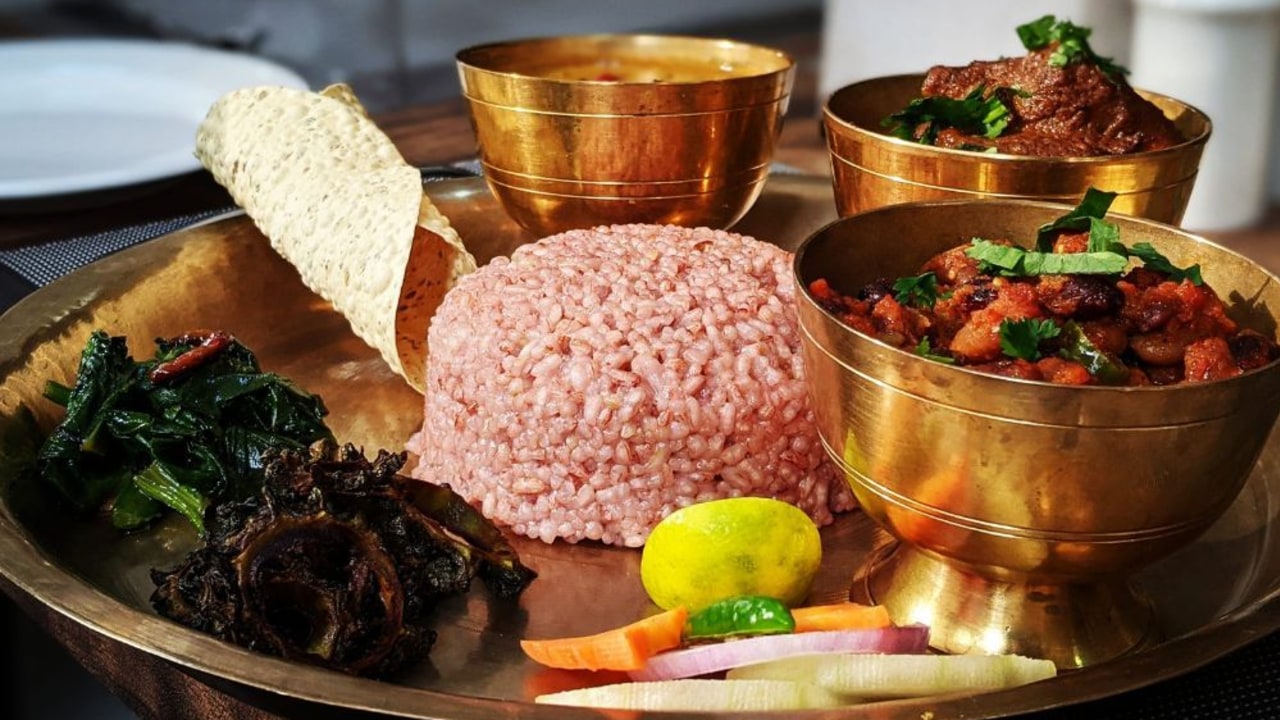
Food and drink in Nepal
Sandwiched between India and China, Nepal’s cuisine is heavily influenced by its neighbours – although dishes tend to be simpler and less varied. Some must-try dishes include:
- Dal Bhat: The national dish of Nepal, a comforting combination of lentil soup served with steamed rice, curried vegetables, and pickles.
- Momo: Steamed or fried dumplings filled with spiced meat or vegetables, usually served with a tangy tomato dipping sauce.
- Thukpa: A warming noodle soup with meat or vegetables, perfect for the cooler mountain regions.
- Sel Roti: A slightly sweet, ring-shaped rice bread, crispy on the outside and soft within — a festival favourite.
- Gundruk: Fermented leafy greens cooked into a tangy stew, reflecting Nepal’s tradition of preserving food for the winter months.
Local liquors include chang (a barley beer), arak (a spirit brewed from potatoes) and, for the brave, rakshi (a knock-out distilled rice wine). If you’re after something non-alcoholic, coconut water and lassi (a sweet yoghurt drink) are great refreshers. Don’t leave Nepal without trying a cup of chiya – sugary, milky, black tea infused with cinnamon, cardamom and cloves.
Nepal Travel Guide FAQs
What should I know about Nepal’s history?
Nepal has a rich history that stretches back thousands of years, shaped by kingdoms, dynasties, and cultural influences from both India and Tibet. The Kathmandu Valley is home to stunning temples, palaces, and squares, including UNESCO World Heritage sites like Pashupatinath, Swayambhunath, and Bhaktapur Durbar Square. Nepal is also the birthplace of Buddha, in Lumbini, making it an important spiritual destination. In the 18th century, the country was unified under King Prithvi Narayan Shah and has maintained its independence ever since. Today, Nepal is celebrated for its vibrant culture, breathtaking landscapes, and warm hospitality, offering visitors a unique blend of history, spirituality, and natural beauty.
Do I need a visa for Nepal?
Irish and UK citizens require a visa to enter Nepal. Ensure you have all relevant documentation before you travel. Non-EU passport holders should check their visa and passport requirements with the relevant Embassy or Consulate. Before travelling, make sure your passport isn’t damaged.
Is the water in Nepal safe to drink?
It is not advisable to drink tap water in Nepal. Bottled mineral water is safe and available everywhere. Ice is generally okay in good standard hotels and restaurants but it is best to avoid it at street stalls or in rural areas. Some minor stomach problems are always possible when travelling in countries abroad, so bring a supply of your usual anti-diarrhea medicine. You should also avoid salads which may be washed in unhygienic water.
What should I pack for the trekking section of the Nepal holiday?
During the trekking section of our Explore Nepal tour, you have two options for your main luggage. Your main luggage can either be ported from lodge to lodge. However, the porters on these routes are only allowed to carry a certain weight. Hence, we do recommend, in order to reduce the weight for the porters, having a separate bag for all the luggage you may need for your trekking, while your main bag will be left in a secure area in your hotel in Pokhara. We recommend also for you to carry a day pack during your treks, to hold your water bottle, extra layers of clothing, a camera, sun screen and insect repellent and any other personal items you might like to take with you on each trekking day.
Below we have prepared a general list of some recommended items that you may like to take with you for the trekking section of your holiday. No matter what the destination, the weather can always be unpredictable, so prepare for the elements by packing layers.
- Walking shoes or lightweight hiking boots are a must
- Walking poles if you are used to using them while hiking
- Socks: We recommend wearing double layered socks, as these prevent blisters
- Long sleeved thermals: tops and bottom
- Shorts and trousers
- Hiking tops: long and short sleeved
- Sandals or lighter shoes for the evening
- Raincoat
- Backpack-day pack (waterproof)
- Toilet paper
- Small binoculars for wildlife viewing in the national parks
- Camera and charger
- Spare batteries are also handy
- Reading and writing material
- Personal first aid kit
- Sunhat and sunglasses
- Water bottle
- Flashlight
- Altitude tablets if you think you will be affected by altitude sickness
- Sun cream
- Insect Repellent
Whilst trekking there are traders dotted along the trails selling everything from down jackets, waterproofs, jumpers, hats and socks at very reasonable prices, so there is no need to panic if you haven't packed enough.
Useful Links
- For up-to-date information regarding entry into Nepal please see: www.dfa.ie
- Official Nepal Tourism Board: www.ntb.gov.np
